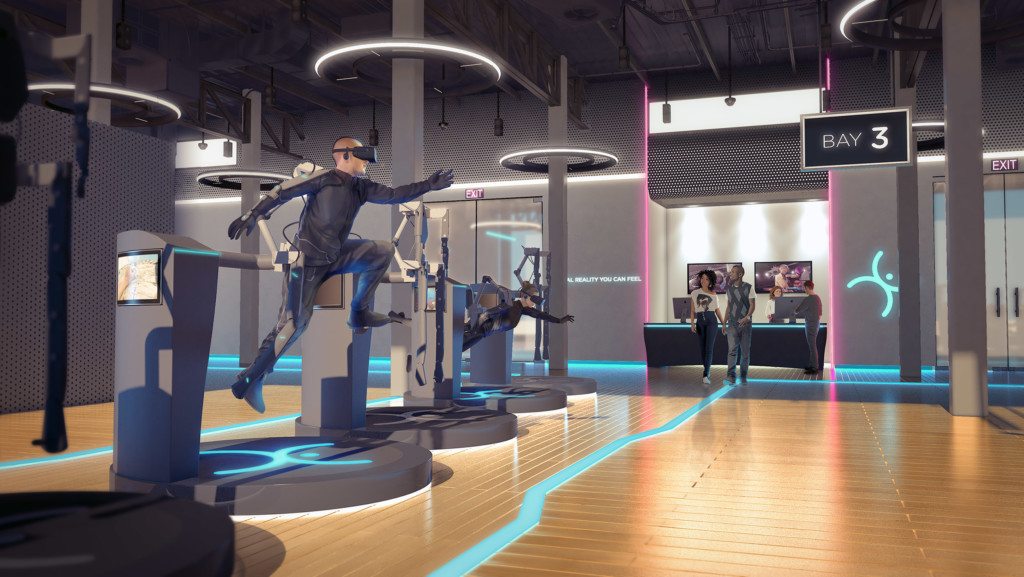VR, the way it is, really doesn’t work. This is largely because you need to move around to be able to get the feel of reality needed in the experience. But, as long as you are tied to a normal room and are tethered, the physical aspect of the room you are in intrudes on the experience. For instance, it could look like you are climbing a hill but really you are walking on carpet until you run into your desk or some other unseen obstacle in the room.
In the movie Assassin’s Creed—based on the popular video game franchise, however, they hook the star into a rig that disconnects him from the room by lifting him off the floor and instrumenting his arms and legs. That seems both excessively expensive and far off into the future. Well, apparently, NVIDIA and AxonVR beg to differ, because they are showcasing technology that could bring this into your home.
They are creating a rig that could make it nearly impossible to differentiate between what is real and what is virtual and take us that next big step towards our Holodeck future.
Let’s talk about that this week.
VR Sucks
Right now, VR sucks—largely because it is basically just a screen you put on your head and a couple cameras and controllers. The controllers don’t morph into the tools you see you are using on the screen, you can’t move around without hurting yourself, and the best experiences are still where you don’t have to move much. And, the more you move virtually, given you don’t physically move, the more likely you are of getting motion sick—something that plagues many VR users. In effect, vision—which is where everyone focused—is only a very small part of what virtual reality will eventually be. Eventually VR will be a technology that engages all of the senses.
AxonVR
What the AxonVR solution suggests is something that more fully engages touch and connects your entire body to the system. This lifts you off the floor and gives you nearly a global range of motion so you can swim, fly, jump, drive, run, and do all of the things you do in the real world while feeling real world like pressure on your limbs and be able to touch and feel virtual objects. This doesn’t yet address smell or taste both of which will be problematic to solve (though smell might be addressable with vibration).
But what it does is make the solution both more real and far more physically engaging—potentially opening up the market for VR to exercise, which is a serious problem for a lot of us during the winter months because, damn, its cold outside. At the heart of this is the concept of “haptics” or the ability to fool your hands (and potentially other parts of your body) into thinking they are touching something they aren’t. You most likely have used haptics in your smartphone which jerks when you push a key on your virtual keyboard to simulate a key actually moving.
Granted, what they are showcasing is technology that could make the necessary hardware work, but this could well be the major missing element that could turn VR from a curiosity into a major component in every home and many gyms.
Wrapping Up
VR sucks today largely because it only is available as a visual solution with controllers. What NVIDIA and AxonVR are showcasing could take it to that necessary next big step of engaging the entire body in a full sense experience (minus smell and taste) which could drop us in the middle of a world like Game of Thrones and make us feel like we are really there. Wouldn’t it be cool to actually ride a dragon?
That experience is coming likely faster than we think and the true age of VR will most likely begin when they get that sorted and maybe add a couple fans so you can feel the wind in your hair. It couldn’t come soon enough for me, for I hear Winter is coming and the night is dark and full of terrors.
- Why Intel’s FAB and Foundry Expansion May Save the Company - April 19, 2024
- Intel Vision: How the AI Wave Could End the Wintel Age - April 12, 2024
- With AI, Communication Skills Become Vastly More Important - April 5, 2024



